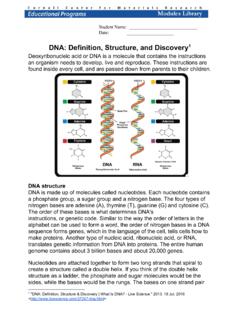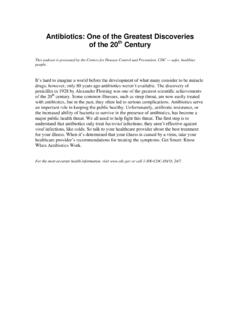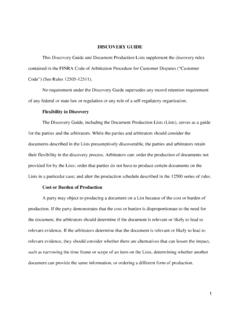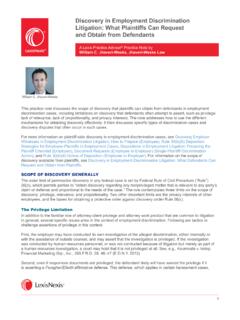Transcription of PARACETAMOL: MECHANISM OF ACTION, APPLICATIONS …
1 Acta Poloniae Pharmaceutica Drug Research, Vol. 71 No. 1 pp. 11 23, 2014 ISSN 0001-6837. Polish Pharmaceutical Society PARACETAMOL: MECHANISM OF ACTION, APPLICATIONS . AND SAFETY CONCERN. MARTA J WIAK-B BENISTA* and JERZY Z. NOWAK. Department of Pharmacology, Chair of Pharmacology and Clinical Pharmacology at the Medical University of d , eligowskiego 7/9, 90-752 d , Poland Abstract: Paracetamol / acetaminophen is one of the most popular and most commonly used analgesic and antipyretic drugs around the world, available without a prescription, both in mono- and multi-component prepa- rations. It is the drug of choice in patients that cannot be treated with non-steroidal anti-inflammatory drugs (NSAID), such as people with bronchial asthma, peptic ulcer disease, hemophilia, salicylate-sensitized people, children under 12 years of age, pregnant or breastfeeding women. It is recommended as a first-line treatment of pain associated with osteoarthritis.
2 The MECHANISM of action is complex and includes the effects of both the peripheral (COX inhibition), and central (COX, serotonergic descending neuronal pathway, L-arginine/NO. pathway, cannabinoid system) antinociception processes and redox MECHANISM . Paracetamol is well tolerat- ed drug and produces few side effects from the gastrointestinal tract, however, despite that, every year, has seen a steadily increasing number of registered cases of paracetamol-induced liver intoxication all over the world. Given the growing problem of the safety of acetaminophen is questioned the validity of the sale of the drug without a prescription. This work, in conjunction with the latest reports on the MECHANISM of action of parac- etamol, trying to point out that it is not a panacea devoid of side effects, and indeed, especially when is taken regularly and in large doses (> 4 g/day), there is a risk of serious side effects.
3 Keywords: paracetamol, acetaminophen, toxic effects, MECHANISM of action, cyclooxygenase, cannabinoid, serotonergic, prostaglandin-endoperoxide synthases Paracetamol (an international name used in Europe) and acetaminophen (an international name used in the USA) are two official names of the same chemical compound derived from its chemical name: N-acetyl-para-aminophenol (the segment cet . inserted between para and amino ) and N- acetyl-para-aminophenol. This drug has a long his- tory and, as it often happens with important discov- eries, it was found by chance. In the 80s of the 19th century, two young doctors at the University of Strasburg, in order to eradicate worms by mistake dispensed acetanilide to a patient instead of naphtha- Figure 1. Chemical structure of analgesics - aniline derivatives. lene (Fig. 1). They noticed that the drug had a small Phenacetin until the 80s of the 20th century was included in the composition of numerous mixtures.
4 Saridon (Roche firm) and the impact on intestinal parasites, however, it signifi- so-called in Polish tablets with cross produced by Polpharma cantly decreased high temperature. Young doctors - SA in Starogard Gda ski (previously Starogardzkie Zak ady Arnold Chan and Paul Heppa - quickly published Farmaceutyczne Polfa) and Marcmed from Lublin are the most their discovery and acetanilide was introduced into well-known preparations. Due to its carcinogenic action damaging the kidneys and the liver as well as the patients tendency towards medical practice in 1886 under the name of an overuse, the drug was withdrawn from the American market in antifebrin (1). Soon it appeared that although the pro- 1983 (in Saridon, phenacetin was replaced by paracetamol). In duction of this drug was very cheap, acetanilide Poland, it happened as late as in 2004. * Corresponding author: e-mail: phone/fax: +48 42 639-32-90.
5 11. 12 MARTA J WIAK-B BENISTA and JERZY Z. NOWAK. Figure 2. Paracetamol on the WHO analgesic ladder (the rules for using analgesics, which consider individual intensity of pain). could not be used as an antipyretic medicament due The use of paracetamol to its high toxicity, the most alarming of which was Paracetamol was introduced into the pharma- methemoglobinemia. This resulted in a great deal of cological market in 1955 by McNeil Laboratories as research on less toxic derivatives of acetanilide. a prescribed analgesic and antipyretic drug for chil- Phenacetin and N-acetyl-p-aminophenol appeared to dren under its trade name Tylenol Children s Elixir be the most satisfying compounds, which had been (the name tylenol derives from its chemical name . earlier synthesized by Harmon Northrop Morse in N-acetyl-p-aminophenol). One year later, 500-mg 1878 (Fig. 1) (2). The first clinical trials with those tablets of paracetamol were available over the two acetanilide derivatives were performed by a counter in Great Britain under the trade name of German pharmacologist Joseph von Mering.
6 On the Panadol, which were produced by Frederick Stearns basis of the obtained results, a faulty conclusion was & Co, the branch of Sterling Drug Inc. In Poland, drawn that paracetamol was characterized by high paracetamol became available in 1961 and since toxicity similar to acetanilide, therefore phenacetin then it has belonged to the one of the most frequent- was the first derivative to be introduced into medical ly sold analgesic medications. There are about a 100. practice in 1887. Phenacetin was widely used in preparations in the trade offer, which contain para- analgesic mixtures until the time when it was associ- cetamol alone or in combination with other active ated with the development of analgesic nephropathy substances. after a prolonged usage (3). In Poland, phenacetin The paracetamol place on the WHO analgesic was used as a component of very popular and avail- ladder, which precisely defines the rules for applica- able everywhere analgesic tablets with the cross.
7 Tion of analgesic drugs, is impressive. This drug has In fact, acetaminophen/paracetamol became popular been placed on all three steps of pain treatment half a year later in 1948 when Bernard Brodie and intensity. In different pains of moderate intensity, Julius Axelrod demonstrated that paracetamol was paracetamol as a weak analgesic together with non- the main active metabolite of acetanilide and steroidal analgesic drugs or coanalgesics ( , caf- phenacetin responsible for their analgesic and feine) is a basic non-opioid analgesic (the first step antipyretic action and that methemoglobinemia was of the analgesic ladder). When pain maintains or induced by another metabolite, phenylhydroxyl- increases, paracetamol is used as an additional anal- amine (4). That discovery revolutionized the phar- gesic with weak ( , caffeine, tramadol) or strong maceutical market of analgesic drugs and since then ( , morphine, phentanyl) opioids from the second paracetamol has started its staggering career.
8 And third step of the analgesic ladder, respectively, Paracetamol: MECHANISM of action, APPLICATIONS and safety concern 13. Fig. 2). Paracetamol, if efficient, is a recommended dosage schedules in pediatric patients should be as oral analgesic of a first choice to be used for a long follows: 10-15 mg/kg oral dose and 15-20 mg/kg time, , in symptomatic treatment of slight and rectal dose every 4-6 h, maximum of 5 doses/day; in moderate pain occurring in osteoarthritis as well as newborns orally or rectally 10 mg/kg of body weight in muscle or tendon pains. Moreover, it is a drug of every 4 h or 15 mg/kg every 6 h (maximum daily choice in patients in whom application of non- dose in newborns is 60 mg/kg). steroidal anti-inflammatory drugs (NSAIDs) are contraindicated, , in the case of gastric ulcers, MECHANISM of action hypersensitivity to aspirin, impairments in blood Although paracetamol was discovered over coagulation, in pregnant women, nursing mothers 100 years ago and has been widely used in medical and children with fever accompanying a disease (5).
9 Practice for more than half the century, its mecha- The use of paracetamol in children requires special nism of action has not been elucidated until now (7). care and maintain in an adequate dosage (based on It has analgesic and antipyretic properties similarly age), which significantly differs from standard adult. to NSAIDs, but contrary to them, it does not possess The recommended dosage for children consider the any anti-inflammatory activity. When applied in metabolism of paracetamol, which determines the recommended doses, it does not induce typical for toxicity of the drug, especially hepatotoxicity (see NSAIDs gastrointestinal side effects. However, it below). In children, paracetamol metabolism suppresses prostaglandin production likewise changes with age: in younger children the sulfation NSAIDs. pathway is dominated route of paracetamol elimina- Due to lack of an anti-inflammatory compo- tion (which is mature at birth); the glucuronidation nent, paracetamol has not been regarded as a mem- pathway takes about two years to mature.
10 The oxi- ber of the NSAIDs family in pharmacological text- dation of paracetamol, which takes place mainly books, although what is interesting, it has been with the participation of the enzyme CYP2E1 in always discussed together with these drugs. neonates is negligible, because the activity of Therefore, the discussion on the MECHANISM of CYP2E1 increases with age, reaching the adult action of paracetamol should begin from the analy- value at age 1-10 years. For comparison, in adults, sis of NSAIDs action. paracetamol is metabolized mainly in the liver via All conventional NSAIDs inhibit the conver- glucuronidation (50-60%), sulfation (25-30%) and tion of arachidonic acid (AA) into prostaglandin H - oxidation (< 10%) (see below in the section on PGH2. The stage is catalyzed by prostaglandin H. adverse effects). Therefore, according to Ji et al. (6), synthase (PGHS), at present referred to as cyclooxy- the proposed dosage of paracetamol in children up genase (COX) within which isoenzymes COX-1.









